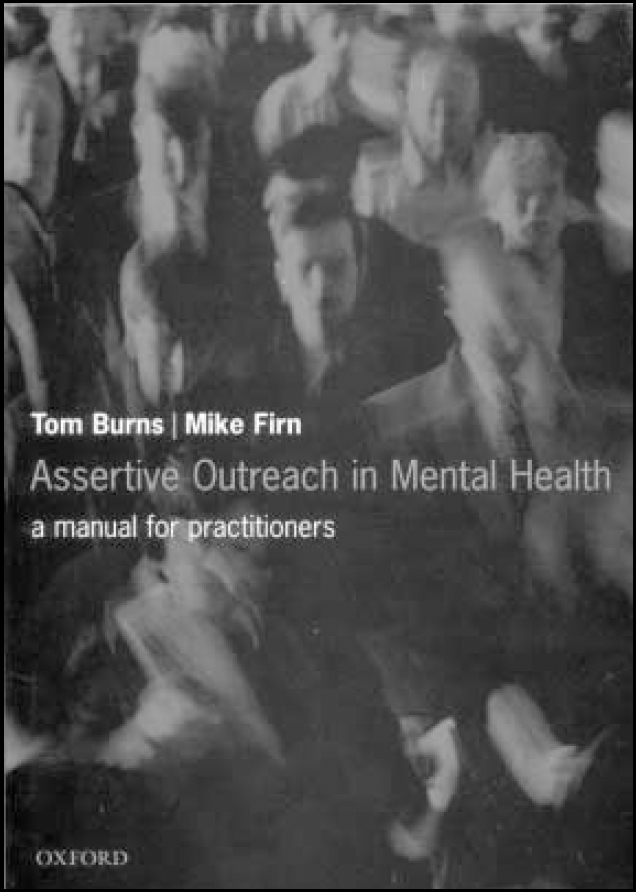
‘This is a handbook primarily for practitioners and not for academics or researchers.’ So write Tom Burns & Mike Firn in the opening sentence of the final chapter in their book. I would agree. This is a readable, practical manual covering all aspects of the origins, development and operation of assertive outreach in mental health.
Part I covers ‘Conceptual issues’ and takes the reader through the origins, context and model for this type of mental health service. There are useful discussions around the target population, and referrals to and discharges from the caseload, with particular emphasis on model fidelity and also on medication, compulsion versus freedom and cultural sensitivity.
Part II on ‘Health and social care practice’ takes the reader through all the major diagnostic categories one would expect in a service where ‘by definition’ the target group will be those with severe and enduring mental illnesses, such as bipolar disorder, schizophrenia, personality disorders, substance abuse, and depression and anxiety. However, in addition, the authors usefully explore the problem areas that lie at the roots of why individuals require assertive outreach: engagement, medication compliance, self-neglect, hospital, suicidality and home-lessness.
Part III, ‘Structural issues’, looks at managing the team, training, service planning, and research and development. The information in this part of the book will be useful for commissioners and service managers, as the authors lay out in detail how to set up an Assertive Outreach Team and how it would fit into the wider mental health system. There are even suggested activities for team building days, such as ten-pin bowling or greyhound racing.
Each part, and indeed each chapter, could be read on its own. The book is an excellent source of material for teaching, learning and debate among practising clinicians of all disciplines and it would be a useful addition to all Mental Health Team libraries. Parts I and III will also help commissioners and managers developing this type of service, a key element of all the frameworks (England and Wales, Scotland and Northern Ireland).



eLetters
No eLetters have been published for this article.